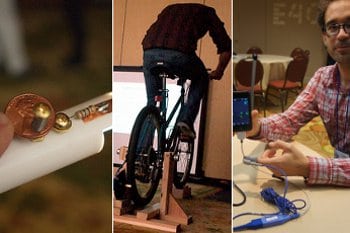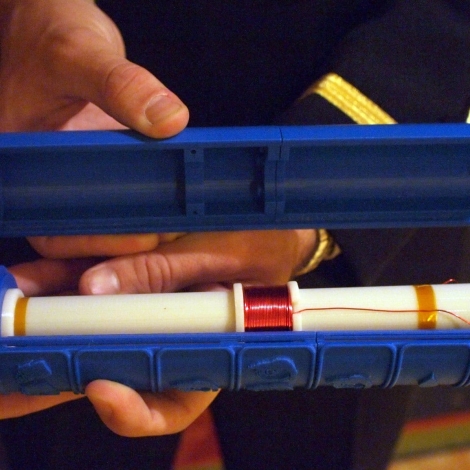
Left to right, a DIY LED stick, a bicycle-powered generator, and a pulse oximeter for a smart phone. Photos by Rob Goodier and Iana Aranda
We saw the surge of ingenuity that engineers can attain when they are designing for extreme affordability at IEEE’s Global Humanitarian Technology Conference in Seattle. Hundreds of students, entrepreneurs, academics, other professionals and thought leaders in the field of design for economic development gathered to share research and ideas.
For a glimpse of what we witnessed and a preview of what to expect next year, these are a few of the promising prototypes at GHTC 2011.
Promising prototypes at GHTC
Salinity sensors boost yields on shrimp farms
A $9 sensor can boost shrimp yields on small farms by three-fold or more.
Poultry Pharm: How eggs become drug factories
With technology at Afrivax, developing countries can quickly produce vaccines and other drugs.
Solar water disinfection indicator
Ordinary clear plastic bottles left in the sun can safely disinfect water with this sensor that takes the guesswork out of the process.
The Wound Pump can triple patients’ healing rate
A $3 device can speed the rate of healing and save lives in low-resource medical centers.
Solar-powered antenna for off-grid communications
Solar cell antennae can power communications devices in off-grid communities and remote areas.
Wave-powered desalinators could ease the water crisis
Soon, energy-converting paddles submerged offshore could power a desalination plant.
![]()
An acoustic landmine detector sweeps fields at 7.5 square ft. per second
Detecting landmines with ultrasonic waves could be faster and safer.
Snap-on bike-powered generators electrify rural India
An Intel India’s team’s attachable generators could ease the country’s energy deficit.
A waste-treating hydrogen production plant in a shipping container
A team from Purdue is developing a biohydrogen plant for disaster response and remote communities.

